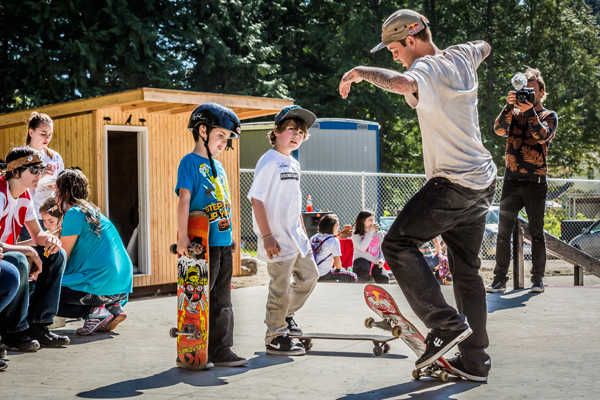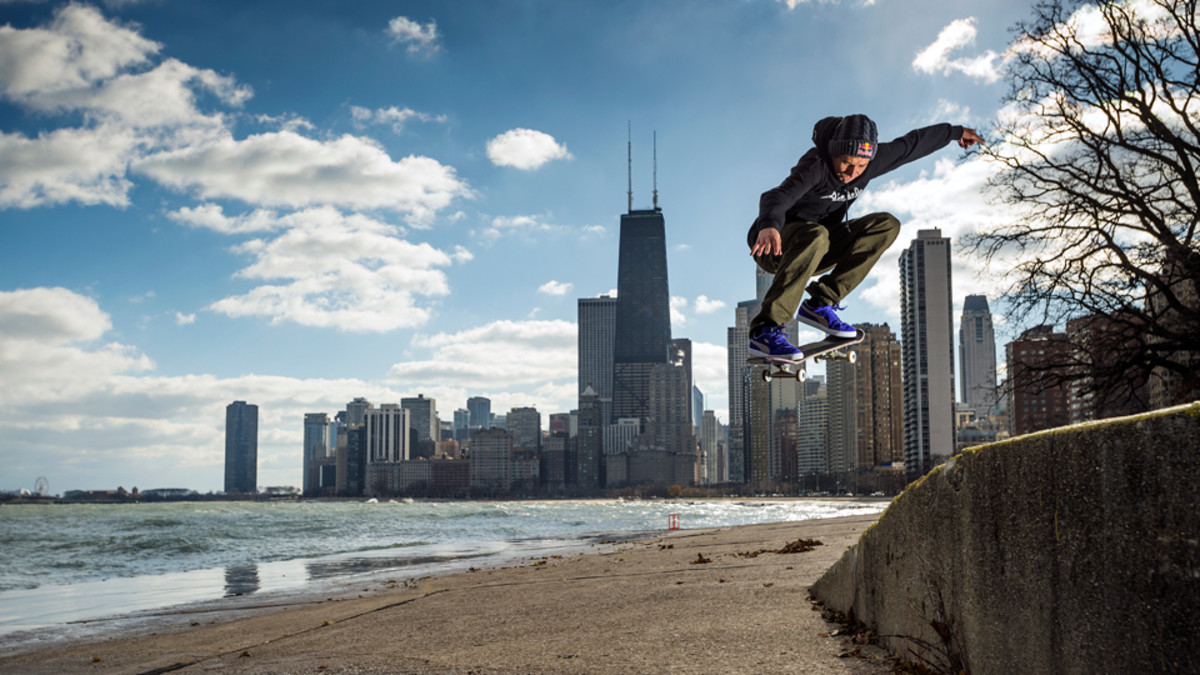Skate Science: The Physics of the Ollie
The Ollie. It’s skateboarding’s bread-and-butter move, a quick, seemingly simple move, overshadowed by all the crowd-dazzling, GoPro-dizzying flips and spins. But there’s a reason they call the Ollie a trick. As anyone who’s tried it (and you know you have) can tell you, the Ollie is, well, tricky.
Originated in the 1970s by Alan (Ollie) Gelfand, his eponymous move allows riders to jump up and over obstacles. How, exactly, that happens takes some understanding. And making it happen takes practice. Paul Doherty, a physicist on staff at the San Francisco-based Exploratorium, led a study on the science of skateboarding’s number-one move, and demonstrated that the entire trick starts with the pressure the skater applies with his or her foot on the board behind the rear wheel.
Doherty tells SI.com that the rotating of the board, the pivot that moves the front of the board into the air, starts with the rear axle. “When you push down on the rear, the ground is pushing up,” he says. “That is torque.”

Ryan Sheckler teaches tribal youth how to ollie a skateboard at the Sheckler Foundation's Dedication of the S'klallam Tribe Skate Park in Kingston, WA.
Aaron Rogosin/Red Bull Content Pool
That torque accelerates the board into rotation and forces the center of mass of the board upward. “The hidden science is the contact force of the ground pushing up as you press down exerting torque,” Doherty says. But if you fell off the board at that time—which, face it, we usually do—the board would continue its upward path without you until gravity brought it back down. Of course, you want to stay on the board, so as you press down heavily with one foot you must also jump up—the timing of which is what makes mastering the Ollie especially tough—to get your own center of mass going up with the board while your feet stay in contact with the deck.
“You have to learn how to leap up yourself, and exactly how fast and hard you push on the back to make this marriage as you move up together,” Doherty says. “It takes a bit of practice to get that delicate balance of forces.”
To keep the board from flipping out of control, you need your front foot to stop the rotation, keeping the board in control. The best Ollie performers can create additional friction by sliding their front foot forward on the board, which also helps propel the board forward while in mid-air.
“You rotate the skateboard by pushing on the back,” he explains. “A nice physics of levers sets the center of mass into vertical motion and the contact with your feet controls continuous rotation of the board and stops it. Then it sets you up for the landing.”
Doherty says that the initial force placed on the back of the board starts a parabolic trajectory for the board, but by the boarder exerting his or her center of mass with friction on the board the trajectory can be changed, even elongated. The better the rider is at manipulating those movements, the higher and more impressive the Ollie.
Pulling off the perfect Ollie may sound simple, but boarders should know that it’s an art founded solidly on science.
Tim Newcomb covers stadiums, design and gear for Sports Illustrated. Follow him on Twitter at @tdnewcomb.





